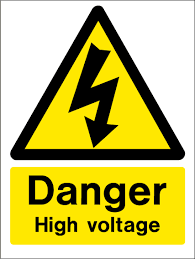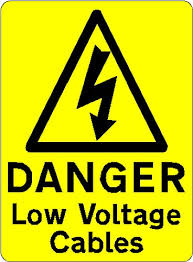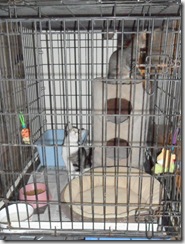News, Some New, Some Old:
How to Open Champagne (And Why It Shouldn't Pop)
" Champagne is supposed to open with a bang, right? Not necessarily, in fact a huge celebratory "pop!" is actually a sign that it was opened by an amateur. Experts contend that a bottle of champagne opened with skill will make only a very small popping sound, or perhaps none at all.
Champagne is supposed to open with a bang, right? Not necessarily, in fact a huge celebratory "pop!" is actually a sign that it was opened by an amateur. Experts contend that a bottle of champagne opened with skill will make only a very small popping sound, or perhaps none at all.
The WSJ gives us a thorough explanation of exactly how to open a champagne bottle like a pro:
- Chill thoroughly Properly chilled champagne will fizz and/or froth over less
- Towel dry the bottle if there's condensation to ensure a good grip and prevent slippage
- Cut the foil using a knife, only tearing with fingers after you've scored the foil.
- Tilt and aim Tilt the bottle to 45 degrees and aim it away from yourself, others, and anything breakable (like windows)
- Hold the cork down with one hand while twisting open the wire cage with the other
- Twist the bottle with one hand while continuing to hold the cork down with the other
- Listen for the sound of air escaping to signal that the bottle is open. There may also be a small cloud of gas.
The pop can be fun when among friends in a party atmosphere but if opened gently and quietly the champagne will have more bubbles and taste better. As the old saying goes "The ear's gain is the palate's loss."
Once you've successfully opened the champagne the next step is pouring it. For the best results make sure the bubbly has been chilled to the proper temperature, 46º F - 57º F depending on age, and then further preserve the bubbles by using a 'beer-like' technique and pouring the liquid down the side of a tilted champagne flute. "
_______________
The Middle East in 2011
"Riots and upheaval across the Middle East dominated world headlines in 2011. Why do we need to watch this region so closely?"
Watch this BT Daily at http://www.ucg.org/beyond-today-daily/news-and-prophecy/middle-east-2011
Free Bible Study aid - The Middle East in Bible Prophecy - http://www.ucg.org/booklet/middle-east-bible-prophecy
____________
Time-Saving Touchscreen Secrets
"Touchscreens can be quick and convenient, but frustrating if you're entering large amounts of text.
If you're one of the 22 million lucky people who got a new iPad for the holidays — or one of the 200 million people who already own an iPhone, iPod Touch, or iPad — here are my top tips for how to get the most out of your Apple touchscreen device in the least amount of time." See video at: http://news.yahoo.com/blogs/upgrade-your-life/time-saving-touchscreen-secrets-141803620.html
__________
Cell Phone Driving Bans, State by State: Where You Break the Law
"When you're traveling, make sure to know the local laws about mobile phone use and text messaging while driving. Some infractions carry weighty fines and even potential jail time.
Many of us want the right to talk and text in our cars, but study after study shows that talking or texting while driving causes accidents. Distracted-driving laws result from battles between legislators, law enforcement, insurance companies, and individuals. Opponents of the laws claim that they're a way for law enforcement to beef up revenue from traffic fines at the expense of individual liberties. Whatever your viewpoint is, this guide should help on your next trip."
United States: The National Transportation Safety Board (NTSB) has been calling for a complete ban on talking and texting while driving, even with hands-free devices.
 "While no states have a complete ban on cell phones while driving, there are bans in some states for drivers who operate certain kinds of vehicles, as well as for beginning drivers. If you are between 16 to 20 years old and planning a road trip, in some places you can be charged even for talking on a hands-free phone behind the wheel."
"While no states have a complete ban on cell phones while driving, there are bans in some states for drivers who operate certain kinds of vehicles, as well as for beginning drivers. If you are between 16 to 20 years old and planning a road trip, in some places you can be charged even for talking on a hands-free phone behind the wheel."
This list is derived from available regulations as of December 2011.
______________
Busting Ten Big Fat Lies About Cars And The Auto Industry

""Engine oil should be changed every 3,000 miles."
Only if you want to set fire to your hard earned cash. Despite what oil companies and quick-lube shops often claim, and even write on those little stickers they put on our windshields, consult the vehicle's manual for proper oil change intervals. Most are a minimum of 5,000 miles, and many are tuned to go 7,500 miles between oil changes. Do yourself a favor, and check the oil at 1,500 miles, 3,000 miles and again at 5,000 miles to see if you need to add a little oil. Make sure to check the oil after the vehicle has been sitting for a while, not right after you come to a stop."
Complete article at: http://autos.aol.com/photos/top-10-car-lies/?icid=maing-grid10%7Chtmlws-main-bb%7Cdl8%7Csec1_lnk3%26pLid%3D123523
______________
Now, The End Of The Year Appeals:
"See 2011's biggest accomplishments for animals, then help us ensure more victories like these by donating today."
"Make a difference for animals. You could be a hero for the dogs, cats, horses, farm animals, wildlife, and so many more who desperately needed help." http://humanesociety.org/hero8
_____________
Make a Resolution to Help Save Abandoned Animals
 "Give abandoned animals hope of a better 2012.
"Give abandoned animals hope of a better 2012.
For the millions of abandoned cats and dogs who live on the streets of America, 2012 is full of uncertainty. Will they go hungry? Will they finally find a forever home? You can help by making a resolution that will save lives.
Become an ASPCA Guardian for just 60¢ a day.
We’re inviting animal-lovers like you to join the ranks of our most loyal supporters and become an ASPCA Guardian. With your monthly, tax-deductible donation, you can help us continue our life-saving programs to rescue, feed and shelter abandoned and neglected animals every day of the year. Together, we can help give more animals a fresh start in 2012." ![]() Make a Monthly Gift
Make a Monthly Gift
_______________


"It’s the last day of 2011 and many birders are scurrying around trying to add those last few birds to their year list. At ABC this year we’ve built a pretty impressive bird list in the Americas - more than 2,725 bird species have benefited from ABC’s conservation work this year - but we urgently need your help to finish the year strong. You can help complete this year’s list by donating today to protect birds."

"From the Wood Thrush and Golden-winged Warbler in the Eastern U.S., to Lewis’s Woodpecker and Greater Sage-Grouse in the West; from Millerbird in Hawaii and Laysan Albatross on Midway, to Lear’s Macaw in Brazil and Marvelous Spatuletail in Peru, your donation will help build the most important list of all - birds that are protected!
![]() Thank you for your support and happy New Year!"
Thank you for your support and happy New Year!"
_____________
"Time is running out! Only one more day to double your support for your national parks.
I hope you know the good news - longtime supporters Bill and Judy Walter are matching all online donations to NPCA, dollar for dollar, until the end of the year.
The response to this generous offer has been nothing short of extraordinary, and we are close to meeting our $100,000 matching gift goal. But we need the help of friends like you to go the full distance. The match offer ends at midnight EST! So I hope you will make a generous year-end gift to NPCA’s park protection efforts while there’s still time. And take comfort in knowing that your gift will go twice as far towards safeguarding our national parks for future generations."
_________________
Beginning of end for old-fashioned light bulbs

"Light bulbs hadn't changed much in the hundred years since Edison's original -- but a new generation of lighting is likely to be switched on.
In the beginning, there was darkness. Then came fire.
It wasn't until the 19th century that artificial light was first generated. The big leap came in the 1880s, when Thomas Edison lit homes across America with the incandescent bulb.
For the next 130 years, incandescents ruled the nights, the roads, and especially the Christmas tree. But today, the last glowing filaments of that living room powerhouse are burning out." More at: http://www.cbsnews.com/8301-500202_162-57350124/not-so-fast-on-end-of-old-fashioned-light-bulbs/
____________
On This Day:
Edison demonstrates incandescent light, Dec 31, 1879:
In the first public demonstration of his incandescent lightbulb, American inventor Thomas Alva Edison lights up a street in Menlo Park, New Jersey. The Pennsylvania Railroad Company ran special trains to Menlo Park on the day of the demonstration in response to public enthusiasm over the event.
Although the first incandescent lamp had been produced 40 years earlier, no inventor had been able to come up with a practical design until Edison embraced the challenge in the late 1870s. After countless tests, he developed a high-resistance carbon-thread filament that burned steadily for hours and an electric generator sophisticated enough to power a large lighting system.
Born in Milan, Ohio, in 1847, Edison received little formal schooling, which was customary for most Americans at the time. He developed serious hearing problems at an early age, and this disability provided the motivation for many of his inventions. At age 16, he found work as a telegraph operator and soon was devoting much of his energy and natural ingenuity toward improving the telegraph system itself. By 1869, he was pursuing invention full-time and in 1876 moved into a laboratory and machine shop in Menlo Park, New Jersey.
Edison's experiments were guided by his remarkable intuition, but he also took care to employ assistants who provided the mathematical and technical expertise he lacked. At Menlo Park, Edison continued his work on the telegraph, and in 1877 he stumbled on one of his great inventions--the phonograph--while working on a way to record telephone communication. Public demonstrations of the phonograph made the Yankee inventor world famous, and he was dubbed the "Wizard of Menlo Park."
Although the discovery of a way to record and play back sound ensured him a place in the annals of history, the phonograph was only the first of several Edison creations that would transform late 19th-century life. Among other notable inventions, Edison and his assistants developed the first practical incandescent lightbulb in 1879 and a forerunner of the movie camera and projector in the late 1880s. In 1887, he opened the world's first industrial research laboratory at West Orange, New Jersey where he employed dozens of workers to investigate systematically a given subject.
Perhaps his greatest contribution to the modern industrial world came from his work in electricity. He developed a complete electrical distribution system for light and power, set up the world's first power plant in New York City, and invented the alkaline battery, the first electric railroad, and a host of other inventions that laid the basis for the modern electrical world. One of the most prolific inventors in history, he continued to work into his 80s and acquired 1,093 patents in his lifetime. He died in 1931 at the age of 84."
______________
U.S. annual casualty figures down, Dec 31, 1971:,
"The gradual U.S. withdrawal from the conflict in Southeast Asia is reflected in reduced annual casualty figures. The number of Americans killed in action dropped to 1,386 from the previous year total of 4,204. South Vietnam losses for the year totalled 21,500 men, while the combined Viet Cong and North Vietnamese total was estimated at 97,000 killed in action.
After 10 years of U.S. involvement in the Vietnam War, a total of 45,627 American soldiers had been killed. The U.S. troop levels, which started the year at 280,000, were down to 159,000. This troop reduction was a direct result of the shifting American goal for the Vietnam War—no longer attempting a military victory, the U.S. was trying to gracefully extricate itself from the situation by transferring responsibility for the war to the South Vietnamese."
___________
Panama Canal turned over to Panama, Dec 31, 1999:
"On this day in 1999, the United States, in accordance with the Torrijos-Carter Treaties, officially hands over control of the Panama Canal, putting the strategic waterway into Panamanian hands for the first time. Crowds of Panamanians celebrated the transfer of the 50-mile canal, which links the Atlantic and Pacific oceans and officially opened when the SS Arcon sailed through on August 15, 1914. Since then, over 922,000 ships have used the canal.
Interest in finding a shortcut from the Atlantic to the Pacific originated with explorers in Central America in the early 1500s. In 1523, Holy Roman Emperor Charles V commissioned a survey of the Isthmus of Panama and several plans for a canal were produced, but none ever implemented. U.S. interest in building a canal was sparked with the expansion of the American West and the California gold rush in 1848. (Today, a ship heading from New York to San Francisco can save about 7,800 miles by taking the Panama Canal rather than sailing around South America.)
In 1880 a French company run by the builder of the Suez Canal started digging a canal across the Isthmus of Panama (then a part of Colombia). More than 22,000 workers died from tropical diseases such as yellow fever during this early phase of construction and the company eventually went bankrupt, selling its project rights to the United States in 1902 for $40 million. President Theodore Roosevelt championed the canal, viewing it as important to America's economic and military interests. In 1903, Panama declared its independence from Colombia in a U.S.-backed revolution and the U.S. and Panama signed the Hay-Bunau-Varilla Treaty, in which the U.S. agreed to pay Panama $10 million for a perpetual lease on land for the canal, plus $250,000 annually in rent.
Over 56,000 people worked on the canal between 1904 and 1913 and over 5,600 lost their lives. When finished, the canal, which cost the U.S. $375 million to build, was considered a great engineering marvel and represented America's emergence as a world power.
In 1977, responding to nearly 20 years of Panamanian protest, U.S. President Jimmy Carter and Panama's General Omar Torrijos signed two new treaties that replaced the original 1903 agreement and called for a transfer of canal control in 1999. The treaty, narrowly ratified by the U.S. Senate, gave America the ongoing right to defend the canal against any threats to its neutrality. In October 2006, Panamanian voters approved a $5.25 billion plan to double the canal's size by 2015 to better accommodate modern ships.
Ships pay tolls to use the canal, based on each vessel's size and cargo volume. In May 2006, the Maersk Dellys paid a record toll of $249,165. The smallest-ever toll--36 cents--was paid by Richard Halliburton, who swam the canal in 1928."
____________
Yesterday:
Jay's mother's house phone has been staticky, and Jay didn't want to fool with getting under her porch, in the mud, to check it out. But yesterday, he realized he was going have to do something, as it went dead. He asked me to bring a corded phone, as he wasn't sure if the one he has works. Misty and I went down there with a phone, some contact cleaner and a 5/16" driver. After Misty and Maddie had their walk-about in the foggy, dewy, morning air, Jay got under there, unscrewed the cover on the outside box, and plugged in my phone. It was dead too, so we know it is on the phone company's side. His mother had just discontinued her 'in-house repair' plan, so she was very relieved. Phone company said they might repair it in the next FIVE days! Nothing more we could do, so we came up here.
Jay and I had just taken some measurements to see what we would need to make an "L" shaped computer desk for me, when my phone rang.
It was Mindi, wanting me to take care of four of her dogs over the New Year's holiday. Mindi's baby nanny wanted time off too, so I will take care of the dogs, but NOT the people baby! Mindi promised to have a Citronella Anti-bark collar for Caesar. I hope she doesn't forget. I can put up with his chewing on my door jam, that can be repaired, but my nerves won't take his constant barking.
 That put Jay and me in a different work mode, as I had to have beds for them to sleep in, having sold four of my kennel cages the other day. The buyer wanted my carpet rugs to go over the wire floors, too. I used to take the doors off, and Mindi's dogs would sleep in there, in dog beds.
That put Jay and me in a different work mode, as I had to have beds for them to sleep in, having sold four of my kennel cages the other day. The buyer wanted my carpet rugs to go over the wire floors, too. I used to take the doors off, and Mindi's dogs would sleep in there, in dog beds.
Armed with the measurements for the desk, and for the carpet for my one remaining kennel cage, we went up to the storeroom  attic. We found a piece of carpet to cover the wire rack in the kennel cage, and some birch for the desk. We cut the carpet, and there was enough to line another cage that I still have. I took off the doors, put doggie beds in there, and the four dogs should be comfy in these dens.
attic. We found a piece of carpet to cover the wire rack in the kennel cage, and some birch for the desk. We cut the carpet, and there was enough to line another cage that I still have. I took off the doors, put doggie beds in there, and the four dogs should be comfy in these dens.
Jay cut the birch, and I have one side in here already, supported by shelves and a stool. It is just a mock-up for now, as it will take some tweaking.
Later, I heard that the dogs won't be here until Wednesday.
The low was a foggy 33°, and turned into a lovely 74° sunny day.

















































